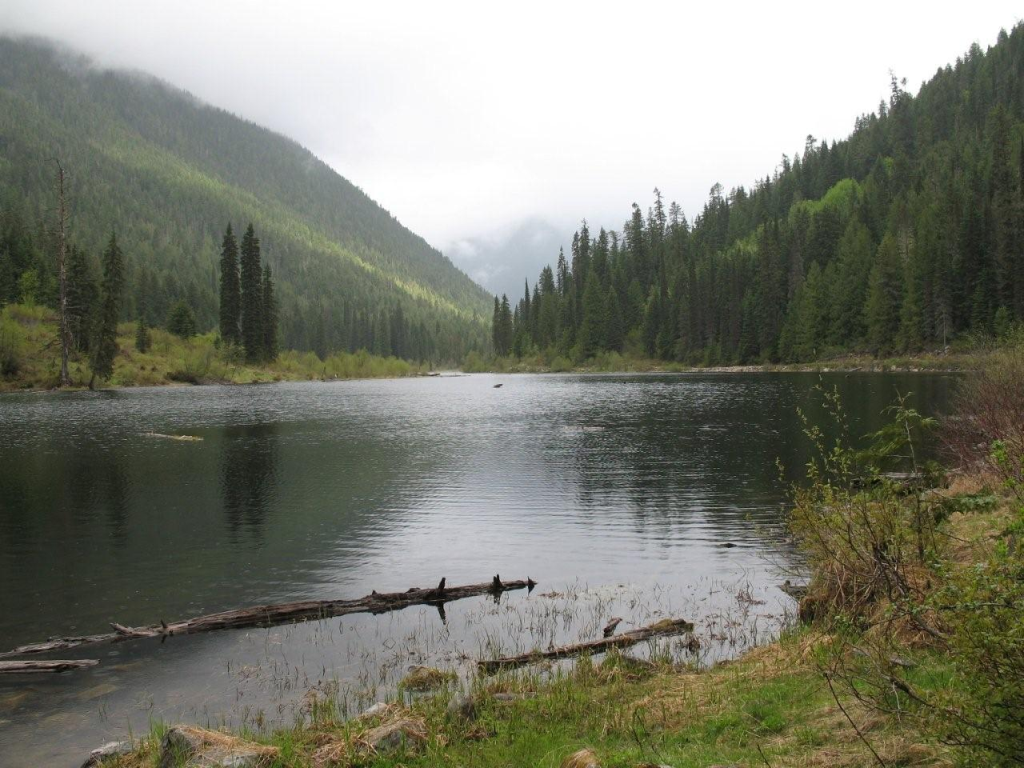- Project Description
- Past Production / Future Potential
- Gallery
- Drilling / Assay Results
The Crusader Gold Property is located on NTS map sheet 082F074 about 20 kilometers east of Hwy 6 N and Lemon Creek Forest Service Rd., and 29 kilometers south and east of Slocan, B.C. The property is road accessible. Follow Lemon Creek Forest Service Rd. east from BC Highway 6N for 18 km. to Crusader Creek Rd. and follow for 5 km. Turn left to go up the Branch #3 Rd to the Golden Wedge / Gold Reef area. To go to the top of Crusader Flats travel further north on Crusader Creek Rd. until it turns west. and follow it for 3 or 4 km. to a left branching road that goes to Crusader Flat at 2,000 m. The Independence and Boulder Mines occur there.
In the geological and mineralization history, Mesozoic and early Tertiary granitic rocks older than about 60 million years were intruded during compression, which forms part of the Nelson batholith granites. The claims are underlain by granodiorite, porphyritic granite and a finer grained greenish-grey granite, cut by quartz, lamprophyre, alaskite and pegmatite dykes (some pyritized).
There are several old workings and adits on the property. The Golden Wedge mine site was in operation by at least 1997 with 12 men working at taking out some rich ore. This property was promoted by the ex-finance minister of Canada, G. E. Foster. A 10-stamp mill and townsite called Ora was established to handle the ore from this mine. The ore was taken from drifts on the main quartz vein, a vein that was reported to have been traced on surface for over a mile. The main commodity in the vein structure was free gold, with values of around 4 ounces / ton Au. There is abundant sericite alteration in the walls of the quartz veins. Tellurides were reported to be present. The “dry ore” (free milling gold) quartz veins were reported to carry values in gold and silver associated with iron pyrites, silver sulfides, and sometimes free gold and silver. The Gold Reef 2 quartz vein measures 2.5 – 3.5 meters wide and is associated with iron pyrites, galena and free gold. This claim was originally worked at the turn of the century and again in 1922 and 1968.
The biggest of at least 10 former producers close to the Golden Wedge property, the Alpine (3 miles southeast of the Golden Wedge), produced 11,413 ozs. of gold from 17,095 tons of ore”. Until recently little work had been done on the Golden Wedge since 1900, and little work had been done on the Gold Reef 2 since the late 1960’s.
Significant underground gold mines
“Golden Wedge” underground mine – from historical report by Eric Denny
- The main quartz vein was described as “a very strong one, and workings along it prove its continuity for over a mile”.
- Mining of the quartz veins on the Golden Wedge claim was done in 1897 to 1898 using 12 miners and a crew of 50 men.
- The main commodity in the vein structure was Gold, with values of 3-4 ounces / ton Au.
- The Gold was reported to be free milling and Tellurides possibly present.
- The “dry ore” quartz veins were reported to carry values in Gold and Silver associated with iron pyrites, silver sulfides, and sometimes free Gold and Silver.
- 2 portals, upper crosscut is 50′ in, drift on the vein was 300′, 200′ lower crosscut is in 175′, drift on the vein was 100′
- Very extensive lamprophyre dump
“Gold Reef 2” underground mine – from John Childs, PhD Geology, report
- From the portal mouth an adit continues beyond 150′ (quite a ways further).
- At ~100′ into the adit, there is a 2′-wide shear zone oriented N345/83E.
- At 120′ into adit, there is a winze (with rotten timbers) to a lower 2nd level.
- Mineralized fault at winze is oriented N10E/84E.
- The portal mouth is in relatively unalterd quartz monzonite, but much of the dump is quartz-chlorite-sericite schist. Thus, the mine is probably located at the contact zone of a roof pendant or screen of country rock” (underlining mine).
- Historical assay of 17.3 oz/ton Au + 7.4 oz/ton Ag and 5.1 oz/ton Au + 4.1 oz/ton Ag
- Limited dump
“W-8cd” underground mine – (historical name not know, our sample site name)
– from 2006 assessment report by Marc Goldenberg
- Exposed gold bearing quartz vein on north outside side of covered portal.
- Quartz vein strikes at 201° x 20°, dipping steeply at 70° to the south.
- Sericite alteration observed on both sides of vein structure. Sericite alteration 10 cm. thick on south side of vein, 4 cm. thick at depth. Rusty clay zone next to vein with thickness of 6 cm.
- Uncovered portal?/opening at mid–adit, exposing extensive black void (nothing visible)
- Samples assays in 2006 near W-8cd were: (S=soil)
- 4467.2 ppb Au Golden Wedge SS4 sample
- 1365.8 ppb Au Golden Wedge SS2 sample
- 1254.5 ppb Au Golden Wedge SS3 sample

